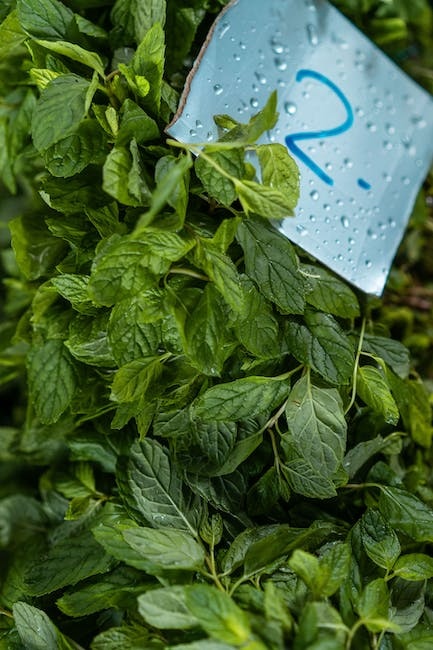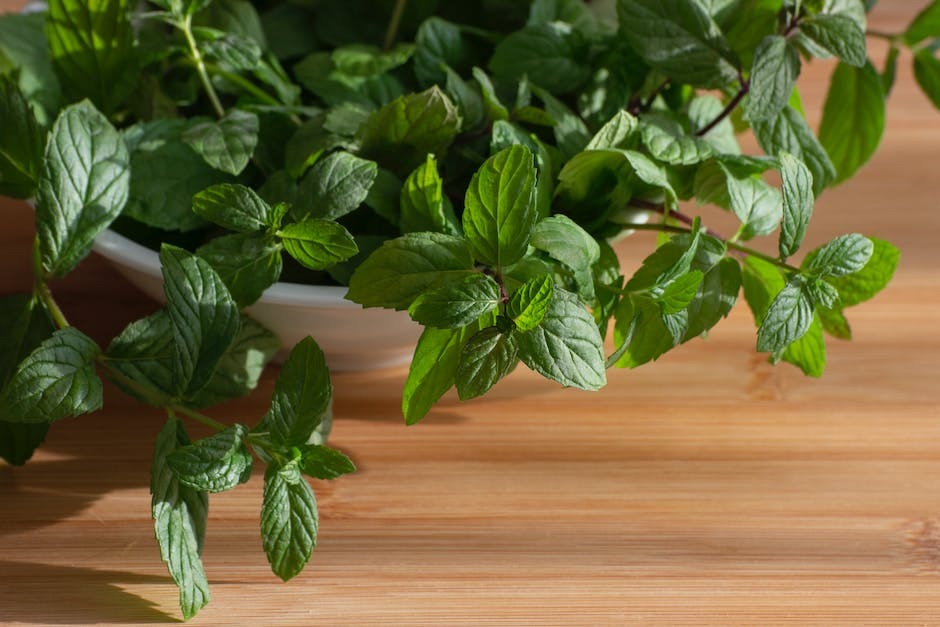Introduction to the Peppermint Tea Plant
The peppermint tea plant, scientifically known as Mentha piperita, is a perennial herb that belongs to the mint family. It is characterized by its distinct fragrance and refreshing taste, making it a popular choice among tea lovers worldwide. This herb is believed to have originated from Europe and the Middle East but is now cultivated in various parts of the world.
The peppermint plant grows to a height of about 1 to 2 feet and is known for its bright green leaves and purple flowers. These leaves contain essential oils that give peppermint tea its unique flavor and numerous health benefits. When steeped in hot water, these leaves release a refreshing aroma and create a soothing and flavorful beverage.
Peppermint tea has been enjoyed for centuries for its many medicinal properties and culinary applications. From aiding digestion to relieving stress, the peppermint tea plant has a lot to offer. In addition to its health benefits, growing and caring for peppermint tea plants is relatively easy, making it an excellent addition to any herb garden.
Health Benefits of Peppermint Tea
Peppermint tea offers a plethora of health benefits, making it a popular choice for those looking to incorporate natural remedies into their daily routine. Here are some of the potential benefits of consuming peppermint tea:
- Improved Digestion: Peppermint tea is known for its ability to soothe and calm the digestive system. It can help alleviate symptoms of indigestion, bloating, and gas. The menthol present in peppermint tea acts as a natural antispasmodic, relaxing the muscles of the gastrointestinal tract and aiding in smooth digestion.
- Relief from Headaches: Peppermint tea is often used as a natural remedy for headaches and migraines. The menthol in peppermint acts as a muscle relaxant, helping to alleviate tension and reduce headache symptoms.
- Boosted Immune System: The high levels of antioxidants in peppermint tea can help strengthen the immune system and protect against common illnesses. Regular consumption of peppermint tea may help prevent respiratory infections and reduce the severity of symptoms.
- Reduced Stress and Anxiety: Peppermint tea has a calming effect on the body, which can help reduce stress and anxiety levels. The natural compounds in peppermint tea, such as menthol and rosmarinic acid, have been found to provide relaxation and improve mood.
- Improved Focus and Concentration: The refreshing aroma of peppermint tea can enhance mental clarity and improve focus. It has been used traditionally to stimulate cognitive functions and increase alertness.

It’s important to note that while peppermint tea may offer these potential benefits, individual results may vary. It’s always advisable to consult a healthcare professional before using herbal remedies for specific health concerns.
How to Grow and Care for Peppermint Tea Plants
Growing peppermint tea plants in your herb garden is a rewarding and relatively easy task. Here are some guidelines to help you successfully grow and care for peppermint tea plants:
- Choosing the Right Location: Peppermint tea plants thrive in full sun to partial shade. Choose a location in your garden where the plant can receive at least 4-6 hours of sunlight each day.
- Preparing the Soil: Peppermint tea plants prefer well-draining soil with a pH between 6.0 and 7.0. Before planting, loosen the soil and incorporate organic matter such as compost or aged manure.
- Planting Peppermint Tea: Peppermint tea can be grown from seeds, but it is easier to propagate using cuttings or purchasing young plants from a nursery. Dig a hole deep enough to accommodate the root ball, place the plant in the hole, and gently firm the soil around it.
- Watering: Peppermint tea plants require regular watering, especially during dry periods. Keep the soil consistently moist but not waterlogged. Avoid overhead watering, as this can lead to fungal diseases.
- Pruning: Trim the plant regularly to promote bushier growth and prevent it from becoming too leggy. Pruning also helps to keep the plant in control and prevents it from overcrowding other herbs in the garden.
- Harvesting Peppermint Leaves: Once the plant reaches a height of 8-12 inches, you can start harvesting the leaves. Use a pair of sharp scissors or pruning shears to cut the leaves just above a leaf node. Harvesting regularly encourages new growth.
By following these simple steps, you can enjoy a thriving peppermint tea plant in your own garden. Remember to provide regular care, monitor for pests or diseases, and enjoy the fresh and fragrant leaves for brewing your favorite peppermint tea.
Culinary Uses of Peppermint Tea Plant
Beyond being a refreshing beverage, the peppermint tea plant offers various culinary uses that can add a touch of flavor to your dishes. Here are some ways you can incorporate the peppermint tea plant into your culinary creations:
- Infused Syrups: You can make a delicious peppermint-infused syrup by simmering peppermint leaves in a mixture of water and sugar. This syrup can be used to sweeten beverages like lemonade or cocktails. It can also be drizzled over desserts or used as a flavoring in homemade ice cream.
- Herbal Butter: Whip up a batch of homemade peppermint herbal butter by mixing finely chopped peppermint leaves into softened butter. This herb-infused butter adds a burst of freshness to bread, muffins, or cooked vegetables.
- Tea Blends: Experiment with combining peppermint tea with other herbs or tea leaves to create unique blends. For example, mixing peppermint with chamomile can create a calming and soothing herbal tea blend.
- Refreshing Salads: Add a handful of fresh peppermint leaves to your summer salads for a refreshing twist. The bright and cooling flavor of peppermint pairs well with citrus fruits, berries, and other herbs like basil or cilantro.
- Minty Desserts: Sprinkle finely chopped peppermint leaves over desserts like chocolate mousse, puddings, or fruit salads to enhance the flavors and add a touch of freshness.
- Flavorful Marinades: Create a flavorful marinade for meats or vegetables by infusing peppermint leaves in a mixture of oil, vinegar, garlic, and spices. This marinade can help tenderize and add a unique taste to your dishes.
Be adventurous in your culinary experiments and discover new ways to incorporate the peppermint tea plant into your favorite recipes. The versatility of this herb makes it a delightful addition to both sweet and savory dishes.
Interesting Facts and Trivia about Peppermint Tea Plant
The peppermint tea plant has a rich history and several fascinating facts associated with it. Here are some interesting trivia about this aromatic herb:
- The name “peppermint” is derived from the Latin word “Mentha piperita,” with “Mentha” referring to the mint family and “piperita” meaning “peppery.” This name reflects the plant’s distinct and peppery flavor.
- Peppermint tea is one of the oldest herbal remedies. It has been used for centuries in traditional medicine for its soothing properties and digestive benefits.
- The peppermint tea plant is a hybrid between watermint and spearmint. It was first discovered in the mid-17th century in England.
- The essential oil of the peppermint tea plant is widely used in aromatherapy for its invigorating and energizing effects. Its refreshing scent can help relieve mental fatigue and promote focus and clarity.
- Peppermint tea is known for its natural pest repellent properties. Placing dried peppermint leaves or tea bags in cupboards or near entry points can help deter pests like ants, spiders, and mice.
- In ancient Egypt, peppermint was used as a natural remedy for indigestion and even as a mild aphrodisiac. It was revered for its culinary and medicinal uses.
- Peppermint tea has long been associated with relaxation and stress relief. It is often used as a bedtime beverage to promote restful sleep and alleviate anxiety.
- The minty aroma of peppermint tea has been found to have a positive impact on cognitive functions, including memory and alertness. This makes it a popular choice for studying or mental tasks.
These intriguing facts about the peppermint tea plant only scratch the surface of its rich history and versatile properties. Whether enjoyed as a comforting beverage or used in cooking, this herb remains a favorite among tea lovers for its delightful flavor and numerous benefits.


Leave a Reply